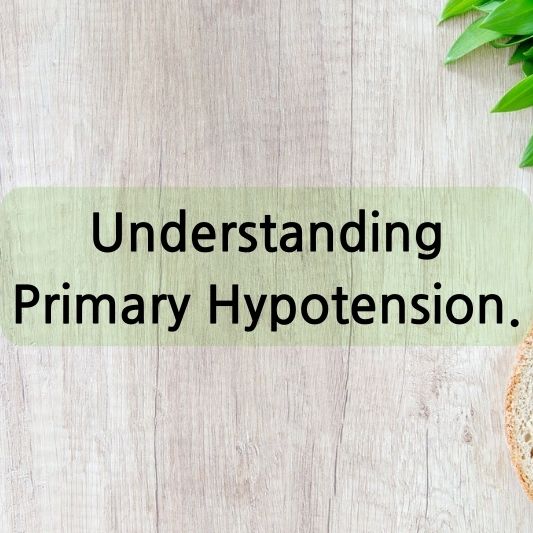Primary hypotension, often referred to as idiopathic or essential hypotension, is a condition characterized by lower-than-normal blood pressure without any identifiable underlying cause. It affects individuals differently and can significantly impact daily life.

Understanding Primary Hypotension
Defining Primary Hypotension
Primary hypotension is a chronic condition where the blood pressure remains consistently lower than the normal range for an extended period. Unlike secondary hypotension, it occurs independently, without being linked to other medical conditions or medications.
Physiology Behind Primary Hypotension
Understanding the physiological mechanisms underlying primary hypotension involves exploring how the autonomic nervous system regulates blood pressure. An imbalance in these regulatory mechanisms can contribute to lower blood pressure levels.
Causes and Risk Factors
Genetic Predisposition
Genetics plays a significant role in primary hypotension. Individuals with a family history of low blood pressure are more likely to develop this condition.
Lifestyle Factors
Certain lifestyle habits such as a sedentary lifestyle, excessive alcohol consumption, or a low-sodium diet can contribute to primary hypotension. Understanding these factors can aid in preventive measures.
Symptoms and Diagnosis
Identifying Symptoms
Primary hypotension may manifest through symptoms like dizziness, fainting, fatigue, and blurred vision. Understanding these signs is crucial for early detection and management.
Diagnostic Procedures
Physicians typically use a combination of medical history reviews, physical examinations, and blood pressure monitoring to diagnose primary hypotension accurately.
Treatment Options
Lifestyle Modifications
In mild cases, lifestyle changes like increasing salt intake, staying hydrated, and avoiding sudden movements can help manage symptoms effectively.
Medication
In some instances, doctors may prescribe medications like fludrocortisone or midodrine to regulate blood pressure levels for individuals with severe symptoms.
Lifestyle Management
Dietary Recommendations
Adopting a balanced diet rich in fluids and moderate sodium intake can aid in stabilizing blood pressure.
Exercise Regimen
Regular physical activity, especially cardiovascular exercises, can assist in regulating blood pressure and improving overall health.
Coping Strategies
Stress Management Techniques
Implementing stress-reducing activities such as meditation, yoga, or mindfulness practices can alleviate symptoms associated with primary hypotension.
Support and Resources
Seeking Support Networks
Joining support groups or seeking professional guidance can provide valuable emotional support and information for individuals navigating primary hypotension.
Conclusion
Primary hypotension, though often benign, can significantly impact an individual’s quality of life. Understanding its causes, symptoms, and management strategies is crucial for effective coping and enhancing overall well-being.
FAQs
1. Can primary hypotension be prevented?
Primary hypotension cannot always be prevented due to genetic factors. However, adopting a healthy lifestyle can help manage symptoms.
2. Is primary hypotension a serious condition?
While primary hypotension is generally not life-threatening, severe symptoms may require medical attention.
3. Are there specific risk factors for primary hypotension?
Yes, genetics, certain medications, and lifestyle choices can contribute to the development of primary hypotension.
4. Can primary hypotension lead to other health complications?
In rare cases, severe drops in blood pressure may lead to fainting or falls, causing injuries.
5. What are the main differences between primary and secondary hypotension?
Primary hypotension occurs independently, while secondary hypotension is linked to underlying medical conditions or medications.
Find out the price of nutritional supplements to help manage blood pressure on iHerb!
